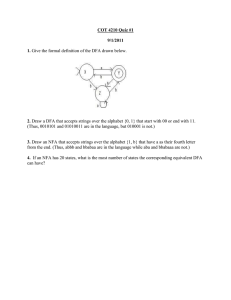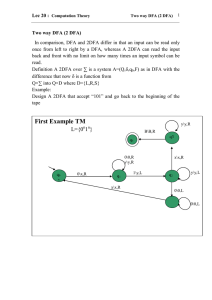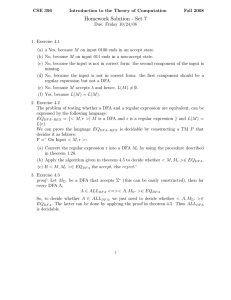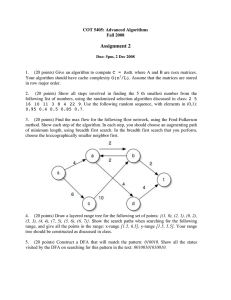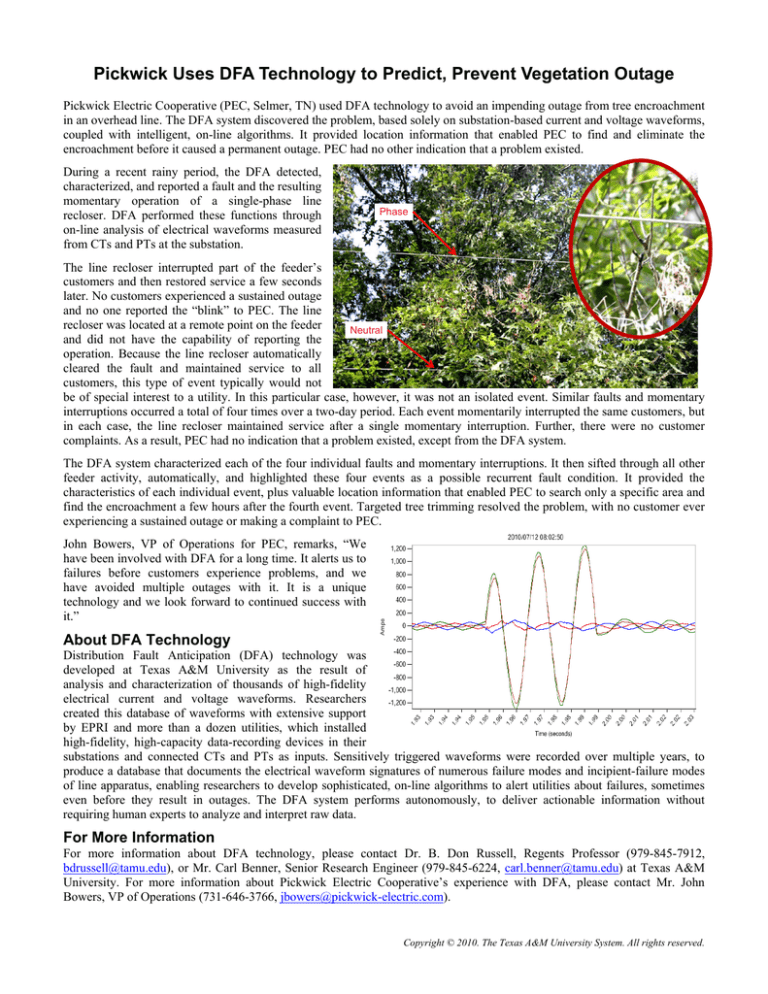
Pickwick Uses DFA Technology to Predict, Prevent Vegetation Outage
Pickwick Electric Cooperative (PEC, Selmer, TN) used DFA technology to avoid an impending outage from tree encroachment
in an overhead line. The DFA system discovered the problem, based solely on substation-based current and voltage waveforms,
coupled with intelligent, on-line algorithms. It provided location information that enabled PEC to find and eliminate the
encroachment before it caused a permanent outage. PEC had no other indication that a problem existed.
During a recent rainy period, the DFA detected,
characterized, and reported a fault and the resulting
momentary operation of a single-phase line
recloser. DFA performed these functions through
on-line analysis of electrical waveforms measured
from CTs and PTs at the substation.
Phase
The line recloser interrupted part of the feeder’s
customers and then restored service a few seconds
later. No customers experienced a sustained outage
and no one reported the “blink” to PEC. The line
recloser was located at a remote point on the feeder
Neutral
and did not have the capability of reporting the
operation. Because the line recloser automatically
cleared the fault and maintained service to all
customers, this type of event typically would not
be of special interest to a utility. In this particular case, however, it was not an isolated event. Similar faults and momentary
interruptions occurred a total of four times over a two-day period. Each event momentarily interrupted the same customers, but
in each case, the line recloser maintained service after a single momentary interruption. Further, there were no customer
complaints. As a result, PEC had no indication that a problem existed, except from the DFA system.
The DFA system characterized each of the four individual faults and momentary interruptions. It then sifted through all other
feeder activity, automatically, and highlighted these four events as a possible recurrent fault condition. It provided the
characteristics of each individual event, plus valuable location information that enabled PEC to search only a specific area and
find the encroachment a few hours after the fourth event. Targeted tree trimming resolved the problem, with no customer ever
experiencing a sustained outage or making a complaint to PEC.
John Bowers, VP of Operations for PEC, remarks, “We
have been involved with DFA for a long time. It alerts us to
failures before customers experience problems, and we
have avoided multiple outages with it. It is a unique
technology and we look forward to continued success with
it.”
About DFA Technology
Distribution Fault Anticipation (DFA) technology was
developed at Texas A&M University as the result of
analysis and characterization of thousands of high-fidelity
electrical current and voltage waveforms. Researchers
created this database of waveforms with extensive support
by EPRI and more than a dozen utilities, which installed
high-fidelity, high-capacity data-recording devices in their
substations and connected CTs and PTs as inputs. Sensitively triggered waveforms were recorded over multiple years, to
produce a database that documents the electrical waveform signatures of numerous failure modes and incipient-failure modes
of line apparatus, enabling researchers to develop sophisticated, on-line algorithms to alert utilities about failures, sometimes
even before they result in outages. The DFA system performs autonomously, to deliver actionable information without
requiring human experts to analyze and interpret raw data.
For More Information
For more information about DFA technology, please contact Dr. B. Don Russell, Regents Professor (979-845-7912,
bdrussell@tamu.edu), or Mr. Carl Benner, Senior Research Engineer (979-845-6224, carl.benner@tamu.edu) at Texas A&M
University. For more information about Pickwick Electric Cooperative’s experience with DFA, please contact Mr. John
Bowers, VP of Operations (731-646-3766, jbowers@pickwick-electric.com).
Copyright © 2010. The Texas A&M University System. All rights reserved.


